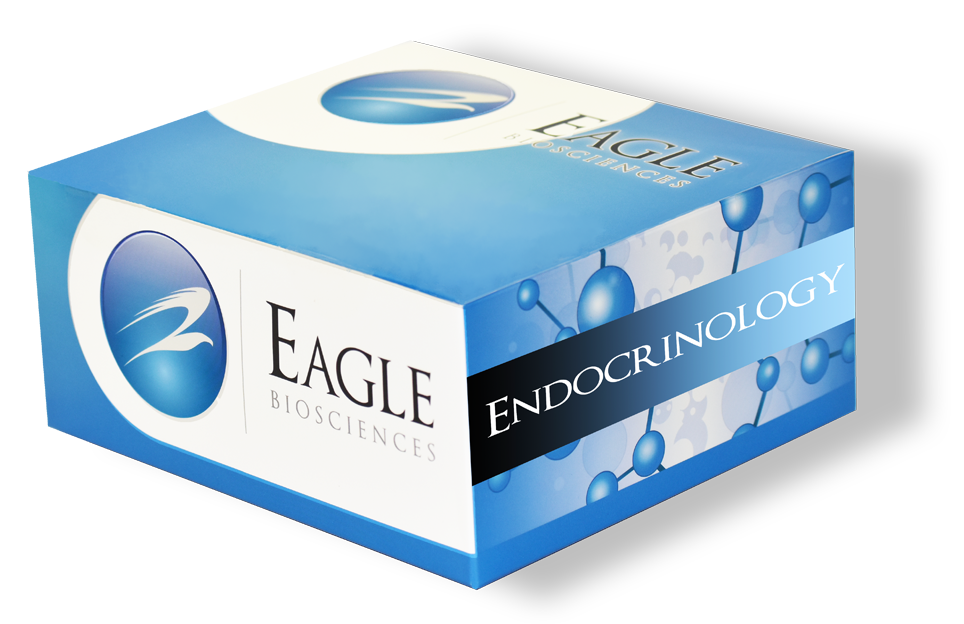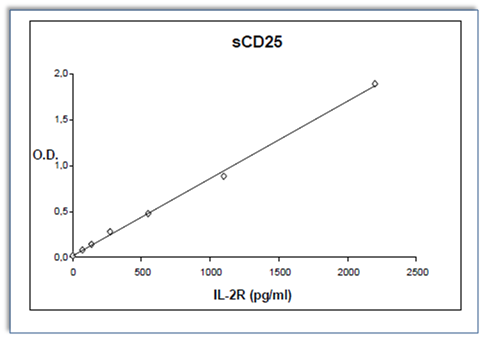Human sCD25 ELISA Assay
The Human sCD25 ELISA Assay is For Research Use Only
Size: 1×96 wells
Sensitivity: 32.5 pg/ml
Dynamic Range: 68.75 pg/ml – 2220 pg/ml
Incubation Time: 3h 40min
Sample Type: Serum, Plasma, Cell Culture
Sample Size: 100 µl
Alternative Names: IL-2R, Interleukin 2 Receptor, soluble IL-2R
Assay Background
IL-2, one of the most important factors in the human immune system, is a potent T-cell growth factor whose major function is the activation of many cells of the immune system including T-cells, B-cells, macrophages and NK cells. These potent actions are mediated by IL-2 binding and signalling through its associated cell surface receptor IL-2R. This receptor is not expressed on normal or unstimulated lymphocytes but is quickly transcribed and expressed on T-cells following activation.
This IL-2R is a heterotrimeric protein consisting of three distinct glycopeptide subunits termed IL-2Ra (CD25) specific to IL-2R, IL-2Rb and IL-2Rg. The a and b chains are involved in binding IL-2 while the signal transduction following IL-2 binding is mediated by the g-chain along with the b chain. The IL-2Ra chain or CD25 is a type 1 transmembrane glycoprotein of 251 amino acids and 55kDa. CD25 can also be found as a soluble form in serum and tissue following enzymatic cleavage from expressing cells and can be identified as a 45KDa protein once shed from the membrane. As the expression and subsequent release of CD25 takes place following cell stimulation the presence of soluble CD25 (sCD25) in circulation is an excellent marker of T-cell activation.
A number of disease states linked to over expression of CD25 have previously been described including, autoimmune diseases, transplant rejection, chronic infection, B-cell neoplasm and various types of leukaemia and other forms of cancer. Because of this definite link between CD25 over expression and disease state many therapies for these conditions have evolved to inhibit this over expression of IL-2Ra.
More recently CD25 has become the major marker for distinguishing the CD4+CD25+ subset of T regulatory cells.
Related Products
Human IL-2 HS ELISA Assay
Human CD126 IL-6R ELISA Assay
Human CD124 ELISA Assay



